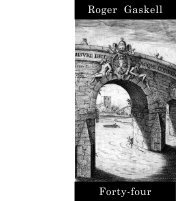pdf - Roger Gaskell Rare Books
pdf - Roger Gaskell Rare Books
pdf - Roger Gaskell Rare Books
You also want an ePaper? Increase the reach of your titles
YUMPU automatically turns print PDFs into web optimized ePapers that Google loves.
327 x 222mm. Titlepage dustsoiled and wormholes and small marginal<br />
tears repaired; round wormholes in the margins at the beginning of the<br />
book, not aVecting text or plates, some minor staining and soiling here and<br />
there, overall a good fresh copy with bright impressions of the engravings.<br />
Binding: Recent vellum boards.<br />
Provenance: undeciphered circular owner’s stamp in margin of titlepage.<br />
First edition, issued as part of Vol. III of Guidi’s Ars medicinalis (3<br />
vols, 1611) and probably also separately. Krivatsy 5118; Waller 3816;<br />
Norman Library 955; cf. Wellcome 6601 (Ars medicinalis, 3 vols, 1611).<br />
In the history of anatomical illustration, Guidi, a descendant of Ghirlandaio,<br />
is celebrated for the superb large woodcuts in his Chirurgia (1544). Sadly his<br />
anatomy was never published in his lifetime, or it might have been graced with<br />
woodcuts to challenge Vesalius. As Wrst published here, it was edited by his<br />
relative and namesake known as Guido Guidi the younger (his dates are not<br />
known). Roberts and Tomlinson speculate that while<br />
some of the illustrations probably originate with Guidi<br />
the elder, others were probably supplied by Guidi the<br />
younger, plagiarised from the usual sources. The text<br />
mentions Vesalius, Valverde and Colombo, so must<br />
have been written after 1543 and before Guidi’s death<br />
in 1569 and ‘is the work of a scientist fully conscious<br />
of the Vesalian revolution and seeking his inspiration<br />
from nature’ (M. D. Grmek, DSB 5: 580).<br />
Commentators vary in their response to the<br />
illustrations. Choulant remarks that ‘the plates are<br />
mostly new and original. They remind one more of<br />
Eust achius than of Vesalius’, while Grmek Wnds them<br />
‘hideous’. This is certainly unfair. Although many of<br />
the Wgures are familiar, many are not (especially the<br />
internal organs), and the arrangement of Wgures on the<br />
plates is original and the engraving is of high quality.<br />
There is no debate about the quality of the engraved<br />
titlepage signed by Francesco Valesio (1560–1648?)<br />
as the artist and Caterino Doino, with whom Valesio<br />
frequently collaborated, as the engraver. Valesio was<br />
the engraver of the titlepage to Casserius, Tabulae<br />
anatomicae (1627) – with which this titlepage shows<br />
some similarity – and he is usually credited with<br />
engraving the Casserius anatomical illustrations (see<br />
Spighel, De humani corporis fabrica below). Although<br />
the plates here in Guidi’s book are unsigned, Cazort,<br />
does not demur in assigning them all to Doino after<br />
Valesio.<br />
The lavish titlepage surely suggests that De anatome<br />
was intended to be issued separately, as well as forming<br />
part of volume III of Ars medicinalis (not the whole<br />
of volume III as is often stated), the posthumous<br />
edition of Guidi the elder’s work, collected, edited







